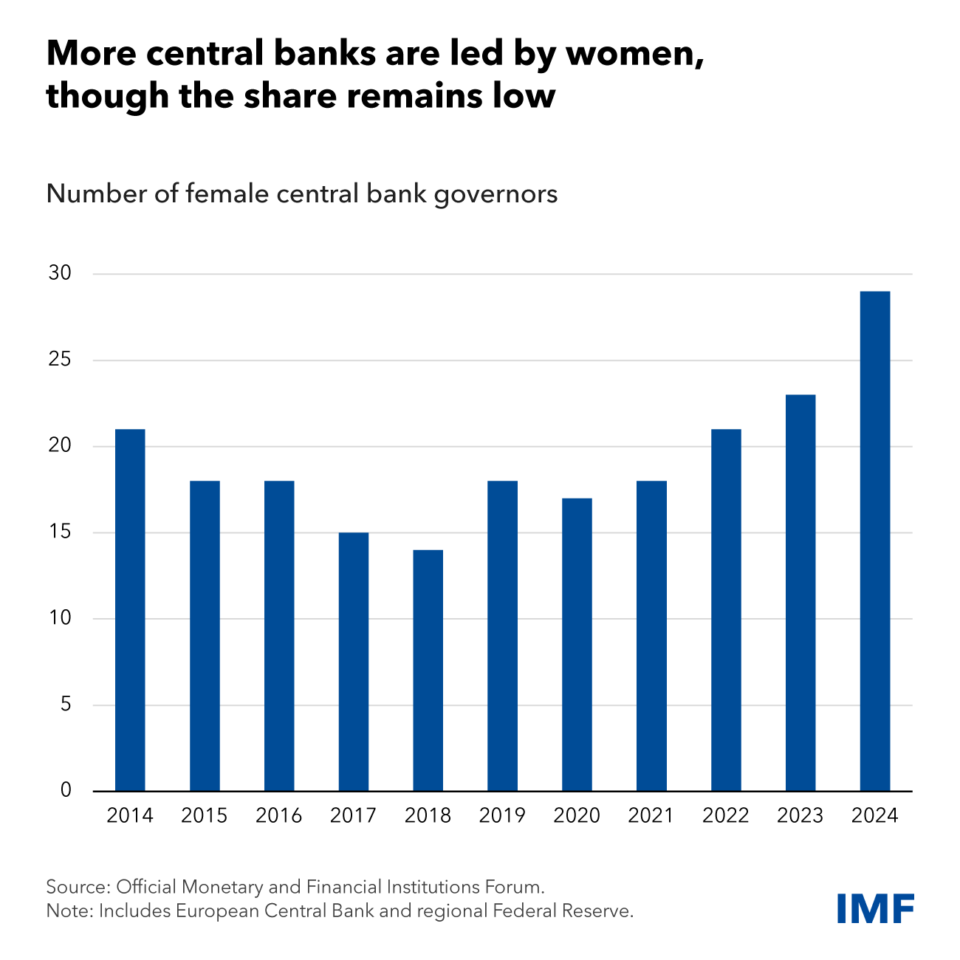In a notable shift towards gender equality, women now lead a record number of central banks worldwide. Recent appointments in Bosnia and Herzegovina and Papua New Guinea have pushed the share of female central bank governors to 16 percent, according to a report by the Official Monetary and Financial Institutions Forum (OMFIF). This is a significant increase from last year, when women held just 23 governor roles. Now, 29 of the world’s 185 central banks are led by women.
While this progress is encouraging, it underscores a broader issue: the representation of women in these powerful positions is still far from equitable. The 16 percent figure highlights the slow pace of change in a sector traditionally dominated by men. Despite the recent gains, the vast majority of central banks are still led by men, pointing to the need for continued efforts toward gender parity in global financial leadership.
Why does this matter? Research by the International Monetary Fund (IMF) suggests that greater gender balance in senior positions can lead to more diverse thought, better checks and balances, and, ultimately, increased economic and financial stability. In other words, more women in leadership roles could enhance the overall performance of financial institutions.
Interestingly, the push towards gender balance is being led not by the world’s largest economies, but by smaller nations like Bosnia and Herzegovina and Papua New Guinea. Their recent appointments demonstrate that progress is possible even in regions with fewer resources and less global influence. This year’s rise in the number of female central bank governors marks the biggest gain in over a decade of OMFIF surveys. However, as highlighted in IMF’s Chart of the Week, there is still much work to be done. Achieving gender parity in the top ranks of global financial policymakers remains a distant goal, but the progress made so far offers hope that the trend will continue.
The financial world is slowly but surely recognizing the value of gender diversity in leadership. As more women step into these pivotal roles, they bring new perspectives that could reshape the future of global finance for the better. Yet, the journey toward full equality is far from over, and the need for continued advocacy and action remains as urgent as ever.

